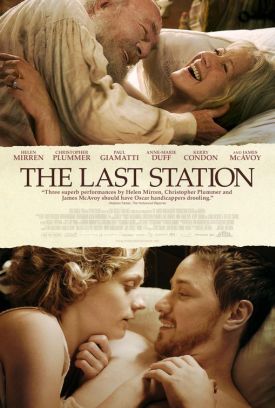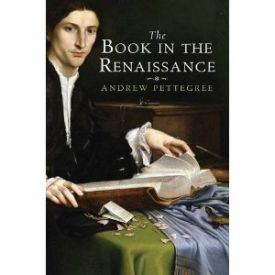Getting to Know Miley Cyrus
From The American SpectatorNew Yorkers walking down the streets of midtown Manhattan in March were suddenly alarmed to notice the figure of a naked man perched on various rooftops and on the 26th floor ledge of the Empire State Building. There were 31 of these effigies, all plaster casts rendered in fiberglass or iron of the same man, who was the artist himself, British sculptor Antony Gormley. The nearest Mr. Gormley could get to explaining to Janice Turner of the Times of London what he thought he was doing was to tell her that “to me it is going back to the basic condition, which is: ‘I am here now, I am an animal living in time, dependent on air, food and having a place.’ For me this is the first principle.”
Not that the animal himself was the one on the rooftops. So of course he was not here, now, as the living, breathing being he is. Rather, he has left inert bits of himself, like giant droppings, all over the city as a public announcement of his own momentous existence — and nothing else. Self- discovery has always been a part of artistic creation, but today self-discovery is getting harder and harder to distinguish from self-publicity. The idea that self-advertisement is some kind of human right has wrought havoc in the art world and, more and more, the world at large.
Over the past few months I have had several public debates with a guy who not only regards “Who I am” — that is, who he is — as an ontological certainty but who believes that the very existence of this Platonic ideal of himself confers certain rights upon him which have never before in human history been regarded as rights at all, let alone rights so absolute and imperative that they must override even any negative effect their exercise might have on national security. Who he is is a homosexual seeking to “repeal” the military’s “Don’t Ask, Don’t Tell” policy on the strength of this same belief, amounting almost to religious faith, in the perfect and unquestioned existence of “Who I am.” This “I,” so often identified with sexual or other self-chosen behavior, we might call “true psychic reality,” belief in which differs from other kinds of faith in requiring a public affirmation for its validation.
As I sat down to write today, my eye fell upon the cover of Parade magazine, delivered every Sunday with the Washington Post, on which there is a photo of a heavily made-up teenage girl with very long hair wearing very tight and low-slung jeans. Next to her image is a quotation, in 72-point type: “I Know Who I Am Now.” Why knowing who she is now should be considered a remarkable feat for a 17-year-old girl or why, even if it were, it should be a matter of any interest to the rest of the world is apparently not a matter of any doubt or uncertainty. Such questions are never raised in the accompanying article, or by Miss Miley Cyrus herself who, in contrast, entertains a certain skepticism about her Christian faith. “Yeah,” she says with teenage sarcasm, “I’m going to go to hell because I’m wearing a pair of really short white shorts. Suddenly I’m a slut. That’s so old-school.”
Some might say that God Himself is rather “old-school,” but Miley is untroubled by any suspicion that the Creator of the Universe could be other than an indulgent parent to her. She is equally certain about having discovered “who I am” (or, possibly, “who I am now“) by falling in love with her co-star in her latest movie. For her, as for the would-be gay soldiers, it is not surprising that the question of who she is should be all bound up with what she does or doesn’t do sexually. What is surprising is that she and Parade magazine should regard her announcement of same as a matter of public interest. Perhaps it’s like saying, back in “old-school” days, that one had found Jesus — an act of witness to a reality that, like the permanence of Miley’s attachment to Mr. Liam Hemsworth, might otherwise seem a bit dubious.
 |
When in The Last Station, Michael Hoffman’s excellent movie about the final days of Leo Tolstoy, Helen Mirren’s splendid Countess Sofya Tolstoya cries out that her husband (Christopher Plummer) is tearing pieces off her so that “I don’t know who I am anymore,” we realize at once that the question of who she is is not an existential one. That is, it is not a question about true psychic reality but something much more down-to-earth. In fact, it is just because she has no doubts of her own about being the wife of her husband, the mother of her children, the mistress of the estate of Yasnaya Polyana, that she finds it so shocking when her husband puts his duty to mankind (as he sees it) ahead of his duty to his family. For her, identity is not in the least mystical or problematical, something to be discovered and announced to the world, but, as it is for most people, something determined by their families, their relations, the bit of land they inhabit, their class and their country. “You are the work of my life,” she tells Tolstoy at one point, “and I am the work of yours.”
Mr. Hoffman’s movie is all about this tension, much rarer in Tolstoy’s day than in ours, between such traditional identifiers as these and the revolutionary and utopian ones that so often produce a sense of liberation from the ordinary constraints of everyday reality but leave a man, as Tolstoy finds out to his cost, with nothing between him and the universe save for his self-chosen “ideals.” But the love of mankind turns out here, as it so often does in real life, to be but a poor exchange for the love of the flesh-and-blood people to whom we are bound by ties of what used to be called nature. “I’ve never met ‘mankind,’” says Tolstoy’s young disciple, Valentin Bulgakov (James McAvoy), to Vladimir Chertkov (Paul Giamatti), the most militant of the Tolstoyans, by way of explaining his newly discovered love for someone he has met, the lovely Masha (Kerry Condon). But as he is a revolutionary by temperament, we may doubt whether his relationship with her marks the formation of a new family or merely another way of projecting onto the universe, as Miley Cyrus does, a private affection as an existential affirmation.
 |
I suspect that the organic ties of blood and belief and nationality are not what they once were partly on account of the suspicion of a lingering tincture of racism or fascism or ethnocentrism or religious bigotry about them. But as answers to the question of “Who I am,” they still seem to most of us to be superior to those involving either our behavior in the bedroom or the utopian ideals with which they so often come in conflict. This is not so, however, in the media and movie culture that seems to become ever more influential in our lives. That’s why Joe Winston decided to make a movie documentary out of Thomas Frank’s book What’s the Matter with Kansas? This movie purports to explain “How conservatives won the heart of America,” yet it consists of almost nothing but portraits of two families of Kansan conservatives.
Mr. Winston has some fun with these people, and especially with their religious beliefs — one family goes to visit the “Creation Museum” in Kentucky — and their lost investments in a now- bankrupt Kansas theme park, Wild West World. But these things are unlikely to be as shocking to the vast majority of Americans who won’t see this movie as they are to the small number of those who will. After a while it began to appear to me that the filmmakers meant to suggest that the ties of parental and filial love, of religion and duty and family and community, were themselves the reason for the disordered universe, as they see it, represented by conservative dominance in Kansas. Mr. Frank himself appears on film to tell the story of radicalism and populism in the Kansas of a hundred years ago and says, in effect, “look on this picture, and on this.”
What’s wrong, he asks, with a world in which the currents of history — lately appearing to the media in all their glory of onward-rushing inevitability in connection with President Obama’s health insurance “reform” — appear to run so backward? Well, maybe the problem is with the historicist model, inherited from Marx, that regards social and political progress according to, well, “progressive” canons as fixed and immutable, the true psychic reality of the race just as the self shorn of its organic ties to family and community is the true psychic reality of the individual. But for those who see “who we are” more in terms of obligation than desire, both kinds of progressive aspiration are likely to appear dangerously utopian. We’re the ones who remember that “utopia” means “no place” in Greek.
Discover more from James Bowman
Subscribe to get the latest posts to your email.







